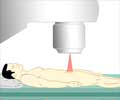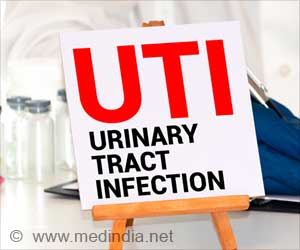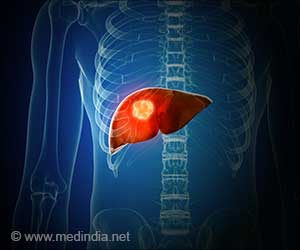Performing less invasive laparoscopic surgery using robotic technology may improve survival rates for prostate cancer patients, according to a study.
Performing less invasive laparoscopic surgery using robotic technology may improve survival rates for prostate cancer patients, according to a study by Thomas Jefferson University Hospital’s multidisciplinary Genitourinary (GU) cancer center.
In a study presented May 21, 2007 at the annual American Urological Society meeting in Anaheim, Calif., the Jefferson urologists found that performing a laparoscopic radical prostatectomy (LRP) with robot technology can reduce positive surgical margins. Positive surgical margins refers to when cancer, seen under a microscope, goes to the edge of a specimen, meaning that cancerous cells likely remain in the patient. LRP is the surgical removal of the entire prostate gland and surrounding tissue including the seminal vessels through several tiny incisions.“We demonstrated a significant improvement in the positive surgical margin rate with the addition of robotics to an established LRP,” said Costas Lallas, M.D., assistant professor of Urology, Jefferson Medical College of Thomas Jefferson University, one of the investigators.Dr. Lallas completed a robotic surgery fellowship at the Mayo Clinic.
“Several large studies have demonstrated that a positive surgical margin increases the chances that the prostate-specific antigen (PSA)- a protein produced by the cells of the prostate gland - will rise after surgery, and increase the chances that the disease will reoccur and progress,” said Edouard Trabulsi, M.D., assistant professor of Urology, Jefferson, a urologic oncologist and an expert trained in laparoscopic prostatectomy by one of the pioneers of the technique. “Therefore, any intervention or technique to lower positive surgical margins, we think, will translate into a better long-term cure rate.”
The study demonstrates that even in a high volume center with an established laparoscopic radical prostatectomy program, which has been in place at Jefferson since 2000, the addition of robotic technology leads to a lower positive surgical margin rate, the researchers said. The Jefferson urologists reviewed the cases of 247 men with clinically localized prostate cancer treated at Thomas Jefferson University Hospital with either LRP or robotic assisted laparoscopic prostatectomy (RALP) from March 2000 to August 2006. Of the 247 cases, 197 patients underwent LRP and 50 patients underwent robotic assisted laparoscopic prostatectomy.
The overall positive surgical margin rate for patients who had LRP was 18 percent, as compared to six percent for those who had RALP.
The Jefferson researchers said they believed the results were so positive here because of the way they approach each case.
Advertisement
Laparoscopic surgery has proven to offer potential advantages to patients including less trauma through smaller incisions, faster recovery and less overall blood loss during surgery, allowing most patients to leave the hospital in one to two days.
Advertisement
Source-Newswise
SRM/V




![Prostate Specific Antigen [PSA] Prostate Specific Antigen [PSA]](https://www.medindia.net/images/common/patientinfo/120_100/prostate-specific-antigen.jpg)






